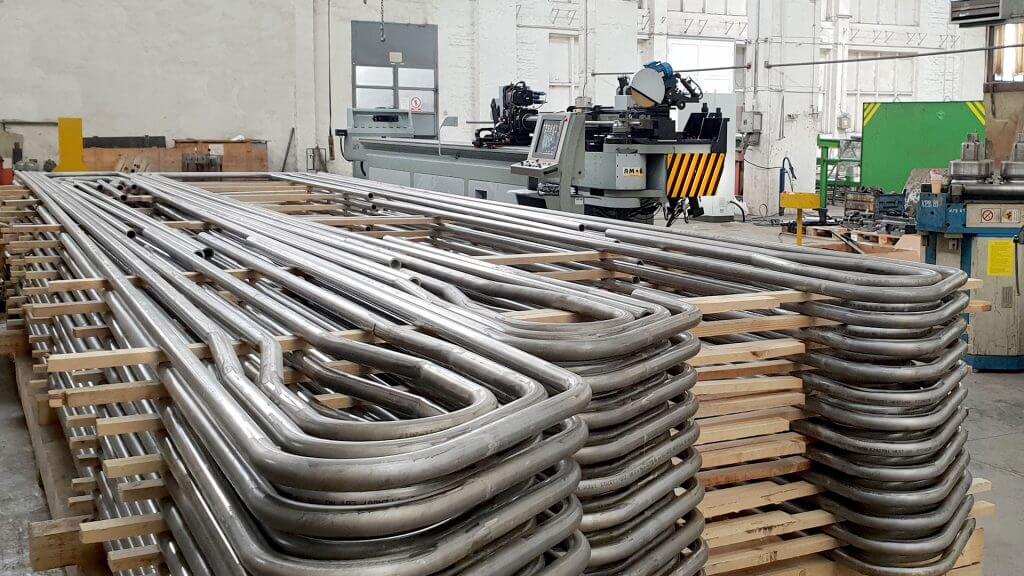Pipe bends, often known as “elbows,” are unique pipeline components that are often seen in onshore buried steel pipes. They are susceptible to imposed deformations, and their structural behavior is highly flexible. They are also connected with the production of considerable stress and strain, which can lead to failure. The mechanical performance of underground steel pipeline bends is examined in this research.
A pipe bend is a fastener used to attach two pieces of conduit, pipe, or chain for a more efficient surface for shipping or another application where strength is required. Pipe bends are often made from steel or cast iron. They are available in a variety of diameters and materials.
Pipe bends come in two basic forms; regular angle bends and long radius bends. Long radius bends are used for straight sections of pipe where the diameter of the pipe material does not exceed the specified diameter of the material to be bent. Constant pressure is applied during the manufacturing process to cause the material to bend in a specified direction.
Different categories
There are three main categories of bends; long radius, 180 degree, and rectangular pipe bends. The long radius bends are used for special purposes, such as pinch bends that are used to join two pipes together when mating similar diameter pipes together. The 180-degree bends are used for joining two pipes together where one end is exactly at the center of the other, or to join two pieces of wood where one end is on top and one end is on the bottom.
The rectangular pipe bends are used for joining two similar diameter pipes together or joining two pieces of different diameter pipe together where each piece fits tightly within the next.
Different uses
Pipe bends are used in construction and manufacturing, especially pipe laying systems and bend machines. Pipe bends are available in a variety of sizes, materials, and patterns to meet almost any requirement.
Bends for functional applications, such as piping joints or racks for tubes, can be made from flat stock or with materials such as rebar or woodchip. The material used for pipe bends does not have a significant influence on ductility or strength. The diameter of the pipe can be affected by the diameter of the fitting being installed and dimensionally correct bends can be used to pass relatively small diameter pipe elements.
Commonly Used Materials For Pipe Bending
Pipe bending techniques will differ depending on the metals utilized. Induction bending, on the other hand, is compatible with a wide range of ferrous and non-ferrous materials due to the lower force required to attain common angles, including:
- Pipes made of steel and steel alloys
- Pipes made of stainless steel
- Pipes made of aluminum
- Pipes made of copper
- Pipes made of nickel
This is especially true in the case of thinner metals that might wrap or get collapsed easily due to cold bending methods.
Why should you choose Prashaant steel and alloys?
There are many reasons you should want to learn about pipe bends from Prashaant Steel and Alloys
First of all, when you have the right tools at your disposal, you only have to move half as far to build awesome bends.
As long as you know what you are doing, the learning process is much less intimidating than it might seem. Secondly, when you are done learning about pipe bends, you will have a greater appreciation for the complex designs that are used every day in construction around the world.
These bends are very common in construction. They are made with stainless steel pipe and steel pipe fitting. For example, Pipe bend S12 is a 1/2 inch diameter bar used to secure a gasket in place on a drain jaw. This is a common application for Pipe bends as they are stronger than a simple circular connector. Pipe bends are used in lighting applications where the light can shine through cracks or into spaces where there is normally shadow.


Recent Comments